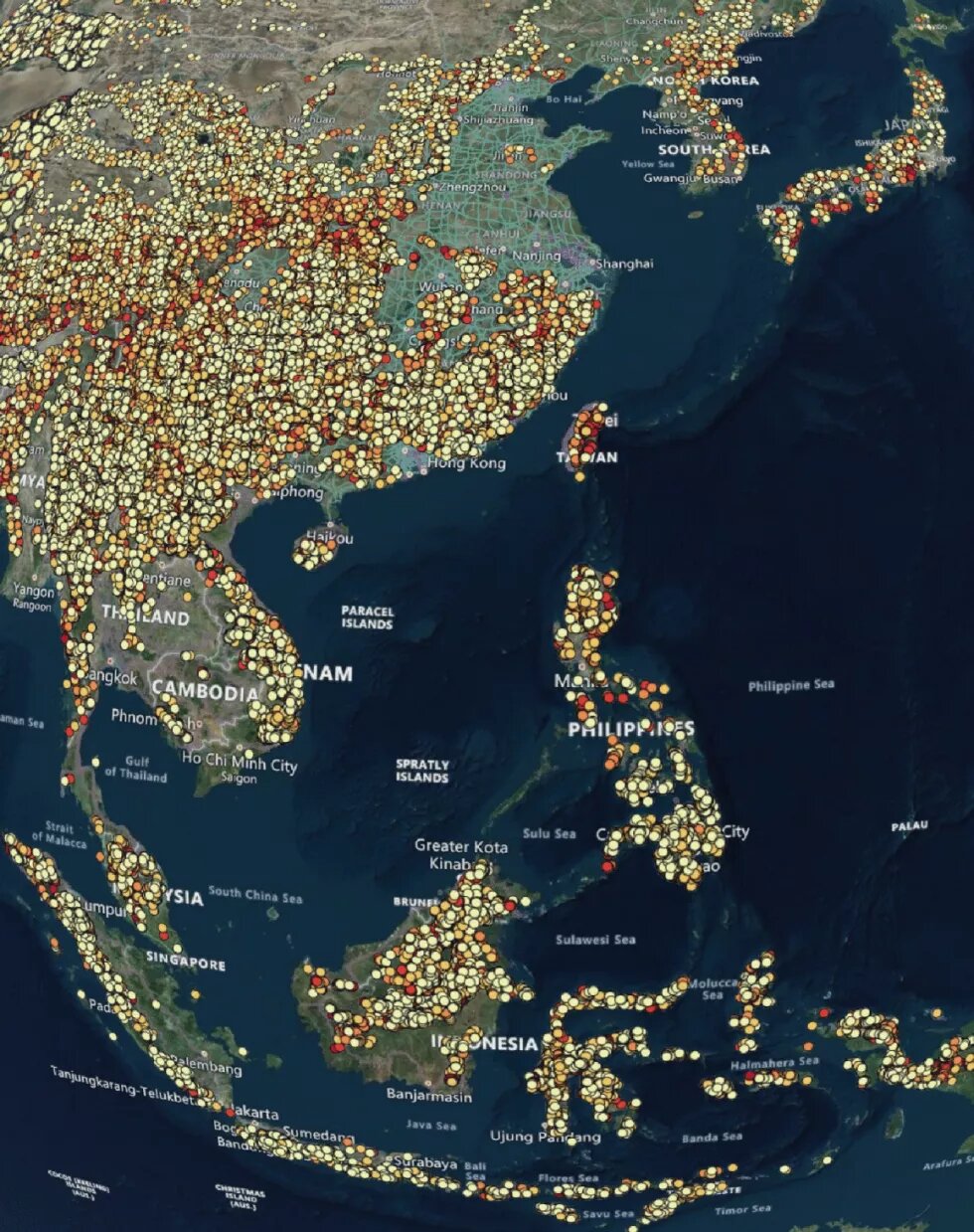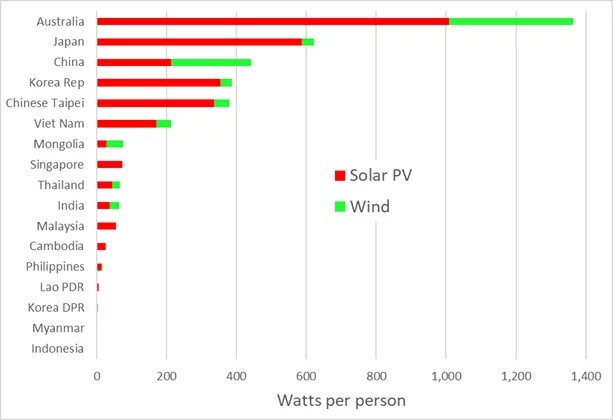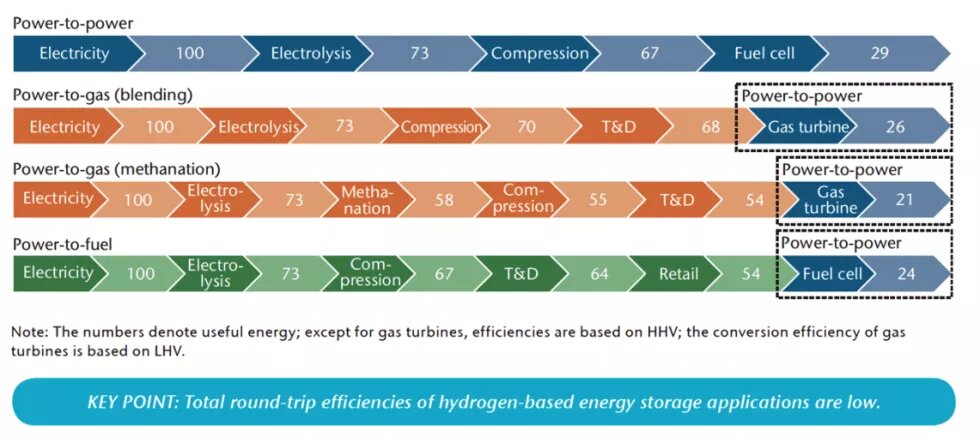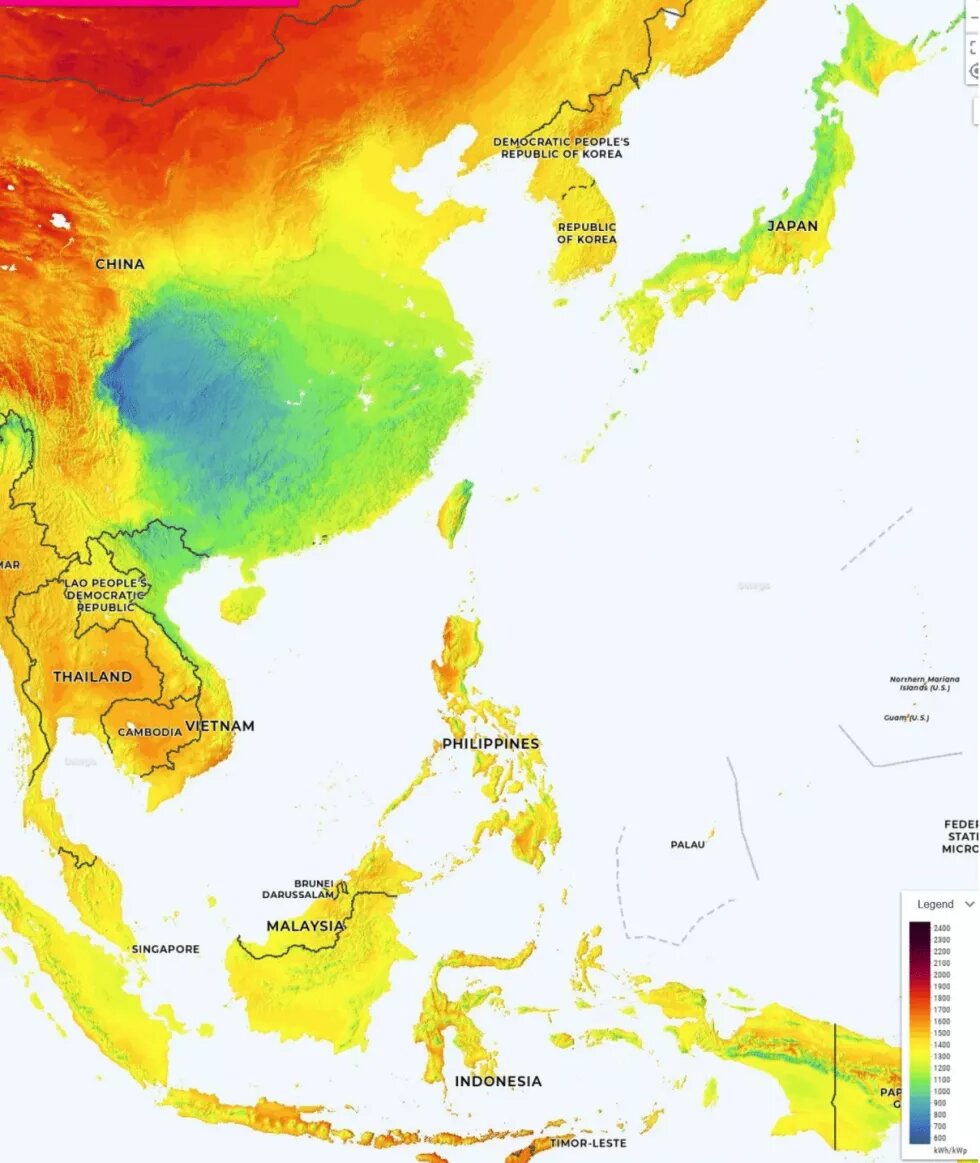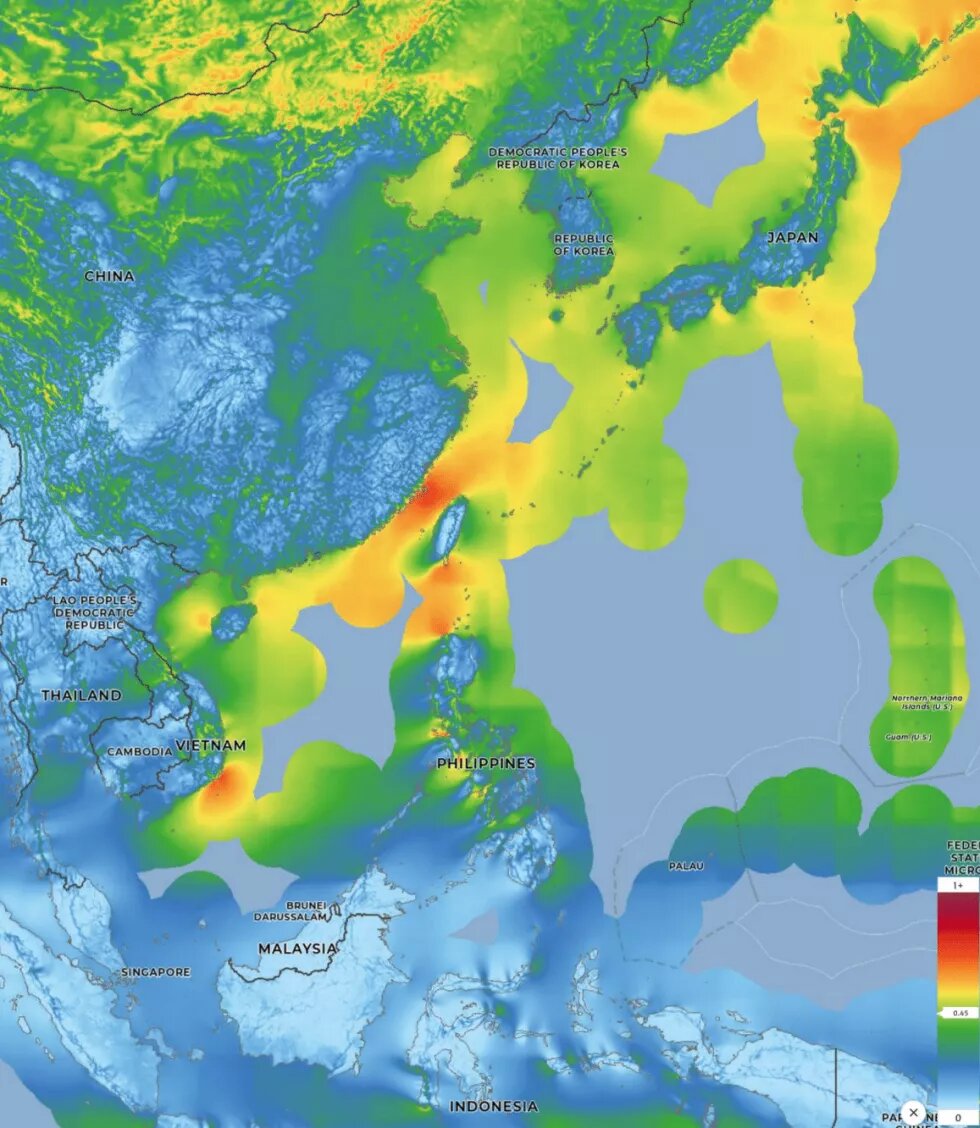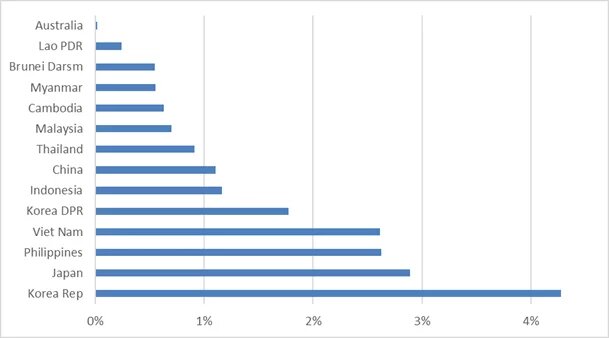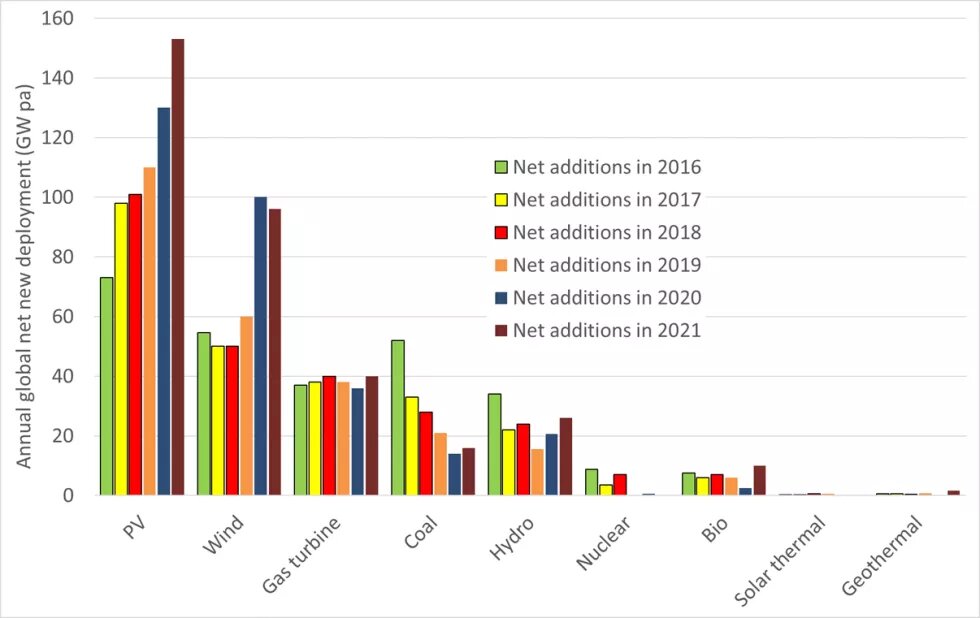
Nearly every country has enough solar and wind to generate its required energy. Pumped hydro makes large-scale energy storage a solved problem. Australia is a global pathfinder in solar photovoltaics. Clean hydrogen, imported from Australia, is frequently touted as a major player in the decarbonization of East Asia’s industrialized countries such as Japan and South Korea. But some of the proposed export markets for hydrogen energy are largely illusory, argues Australian National University engineering professor Andrew Blakers.
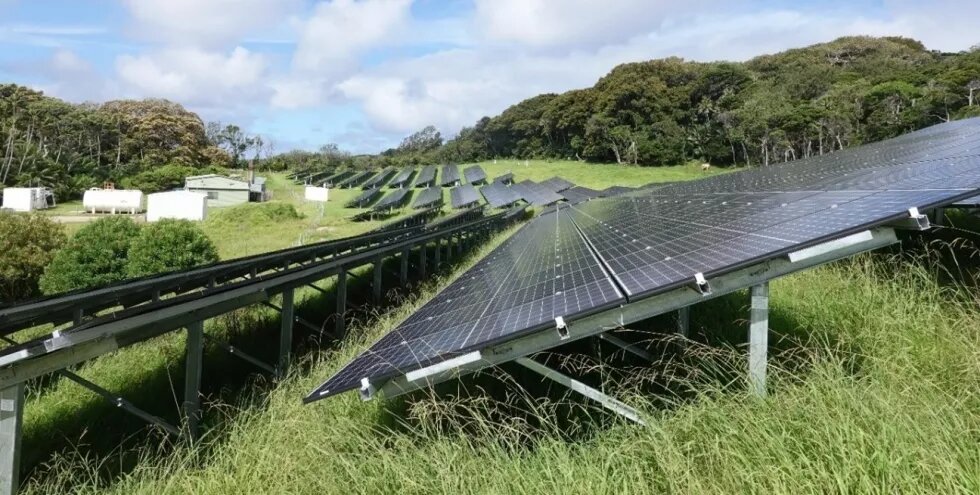
Solar and wind have won the low emissions energy race. Nearly every country has enough solar and wind to generate its required energy. Clean hydrogen, imported from countries with high solar and wind potential such as Australia, is frequently touted as a major player in decarbonization for the highly industrialized countries of East Asia such as Japan and South Korea. It will play a role, but solar and wind are much more important. Some of the proposed export markets for hydrogen energy are largely illusory – and unnecessary.
Hydrogen is versatile and can perform many functions. However, electricity directly from solar and wind is even more versatile and generally much cheaper. Converting solar and wind electricity to hydrogen and back to electricity or motive power is only 20-30% efficient which triples the price of energy.
Clean hydrogen has little potential in the energy sector, but large potential in the chemical sector where hydrogen atoms are needed for production of ammonia, synthetic jet fuel and other chemicals.
1. The rise and rise of solar and wind
Fossil fuels cause three quarters of global greenhouse gas emissions. Most countries have committed to deep reductions or elimination of greenhouse emissions by mid-century. This necessarily requires elimination of fossil fuels from the global economy.
Solar and wind generators comprise three quarters of global net generation capacity additions over the last five years, and they are by far the leading technologies for displacement of fossil fuels (Figure 1). This is coupled with sustained declines in the price of solar and wind electricity. The market is speaking clearly: solar and wind will do the heavy lifting to drive fossil fuels out of the global economy.
The potential speed of the transition is illustrated by pathfinder countries. In Australia’s National Electricity Market, the renewable share increased from 16% in 2017 to about 35% in 2022 and is likely to exceed the Government’s target of 82% in 2030.
Excluding China, global coal capacity is shrinking. The corollary is that there will be a rapid shift to solar and wind generation: companies are not building anything much except solar and wind. In developed countries, retiring coal plants are replaced by solar and wind. In developing countries, solar and wind supply most of the future growth in electricity demand. Dramatically increased uptake of solar and wind is likely during the 2020s. Australia is demonstrating that the transition can be quite rapid.
Solar and wind utilize vastly available energy sources that will last for billions of years. They are available at low cost almost everywhere and have low environmental and social constraints. An energy system built largely upon solar and wind eliminates most greenhouse gas emissions, energy exports and imports, car exhausts, smokestacks, urban smog, oil spills, oil-related warfare, fracking for gas, open-cut coal mines, coal mine fires, ash dumps, flooding of rivers for hydroelectricity, nuclear waste, nuclear accidents, nuclear weapons proliferation and energy-related water use.
Most countries have sufficient solar and or wind resources for their own needs, which is advantageous in the face of war, pandemic, natural disasters and trade disruption. There are no fundamental material constraints. Solar and wind power are difficult to misuse in a significant way for military, terrorist or criminal activities. It is unlikely that countries would ever go to war over access to solar and wind resources. It is difficult to disrupt an energy system comprising millions of solar panels and thousands of wind turbines spread over millions of hectares, and connected with a dense transmission network, and including millions of home and electric vehicle batteries and dozens of utility battery and pumped hydro energy storage systems.
In its 2021 World Energy Outlook, the International Energy Agency states that “in most markets, solar photovoltaics (PV) or wind now represents the cheapest available source of new electricity generation.” Solar PV and wind have a large head start over competing low emission technologies for delivery of power at multi-Terawatt scale. It will be difficult for any other low emission technology to catch solar PV and wind (which are themselves growing rapidly) because extravagant growth rates would be required.
2. Balancing solar PV and wind
Balancing solar PV and wind to deliver highly reliable electricity is straightforward at low cost using off-the-shelf technology. Methods of balancing include energy storage; strong interconnection between regions to smooth out local weather; hydroelectricity; and demand management. In practice, a combination of many methods is optimum.
Large-scale electrical energy storage is a solved problem in the form of batteries (for storage of seconds to hours) and Pumped Hydro Energy Storage (PHES, for storage of hours to days). Why is so little new storage per capita being built in most countries? Simply because so little solar and wind per capita is being deployed. Solar and wind drive the need for storage. When a country rapidly builds solar and wind then storage will follow.
Only a few countries (led by Australia) are rapidly installing solar (and wind). When other countries follow suit, they will discover that balancing is quite straightforward. Price discovery in a free energy market rapidly leads to storage, transmission and demand management.
Pumped hydro is an off-the-shelf, cost, low-environmental-impact energy storage technology that is unconstrained by raw material availability, that has already been deployed at vast scale and that is available at unlimited scale nearly everywhere. The global pumped hydro atlas lists 616,000 good sites with an enormous 23,000 Terawatt-hours (TWh) of storage potential.
Most existing PHES systems are located on rivers, often in conjunction with hydroelectric generation systems. However, nearly all the good PHES sites are located away from rivers, for the simple reason that most of the global landscape is not near a river. These are called “off-river” or “closed loop” sites. The reservoirs can be constructed in hilly country away from any river. Water cycles indefinitely between the upper and lower reservoir. There is no need for new dams on rivers and the area flooded by the reservoirs required to support 100% renewable energy is a few square metres per person.
There is large off-river pumped hydro potential (Figure 2) in Japan (2,400 sites, 53 TWh), Korea (250 sites, 6 TWh), China (116,000 sites, 3,800 TWh) and ASEAN (60,000 sites, 2,000 TWh). This is 10-100 times more than needed in each country.
3. Pathfinding: Australia
Pathfinding is crucial in accelerating uptake of new technology. Australia is the global solar pathfinder. Australia is generating twice as much solar electricity per capita (Figure 3) compared with any other Gigawatt-scale electricity system and has more than 1000 Watts per person of installed solar PV (Figure 4).
Australia is physically isolated from neighbouring countries and must cope alone with high levels of solar and wind. The task is less expensive than many people anticipated. The Government target for the National Electricity Market is 82% renewable electricity (mostly solar and wind) by 2030 compared with about 35% in 2022 and 16% in 2017.
The main factor encouraging uptake of solar and wind in Australia is compelling economic advantage over fossil fuels. Australia has good solar and wind resources.
Australia is about to invest heavily in offshore wind to complement onshore solar and wind. Japan, Korea and northern Europe have enormous offshore wind to complement onshore solar.
Importantly, Australia has a relatively free electricity market with few subsidies for either fossil or renewable energy. This allows price discovery, which decisively shows that solar and wind farms produce the cheapest energy. Additionally, households and businesses have the right to connect their rooftop solar systems to the grid. About 30% of dwellings have a 2-20 kW rooftop solar PV system.
Australia has low political and business investment risk, skilled technical management by the Australian Electricity Market Operator, a strong national consensus that storage is a solved problem via off-river pumped hydro and batteries, and a clear understanding that there are no significant technical impediments to exceeding 80% renewable electricity. The announced target of the new Australian Government for 82% renewable electricity in the National Electricity Market by 2030 was seen to be unremarkable and even a little slow.
4. Decarbonization technology
Decarbonization is promised by many countries by mid-century, only 28 years away. It is important to focus on today’s commercially successful low-emission technologies that are available in 100 Gigawatt quantity (or equivalent) and that utilize vastly available resources. These comprise solar, wind, pumped hydro energy storage, battery storage, high voltage transmission, electric vehicles, electric heat pumps and electric furnaces.
To this must be added electrolysis of water to produce hydrogen atoms for the chemical industry. This is an immature technology that requires sustained stimulus to reach the required scale.
It is best to avoid heroic assumptions about future technical developments including extravagant growth rates and large cost reductions to compete with solar and wind. This comprises new generation fission energy, fusion energy, carbon capture and storage, solar thermal energy and ocean energy. Technologies with a small resource base including hydroelectricity, bio energy and geothermal energy cannot contribute substantially to future energy.
5. Hydrogen in the energy sector
Clean hydrogen derived from solar and wind via electrolysis of water can do a lot of things in the energy sector, but it is rarely the best tool. Direct use of electricity derived from solar PV and wind usually does a much better job. About three-quarters of global emissions can be eliminated simply through the generation of zero-emission electricity from solar and wind, coupled with the electrification of land transport (electric vehicles) and heating (electric furnaces and heat pumps).
Electric technologies have a far larger market share than hydrogen-powered equivalents because they are cheaper. In 2021, electric vehicles outsold hydrogen powered vehicles by a ratio of 400:1. Electrification of heating and cooling is well underway, whereas participation of hydrogen in these markets is negligible.
Various Governments and companies, including and especially Japan and South Korea, have produced hydrogen plans. However, market forces largely determine energy technology. The market is speaking clearly: electric energy technologies powered by solar and wind are the preferred path to low emissions energy.
There are large energy losses in a hydrogen cycle. Solar and wind can be used to produce hydrogen followed by compression, shipping, storage and conversion back to electricity or motive power (in a vehicle). However, about three-quarters of the energy is lost during this process (Fig. 5).
This triples the effective cost of clean energy via hydrogen. It’s usually much cheaper to use electricity from local solar and wind than to import hydrogen energy. Thus, prospects for large-scale hydrogen energy exports are largely illusory.
6. Hydrogen atoms for chemical compounds
Clean hydrogen will primarily be for chemical compounds rather than energy production. It’s important to keep perspective: electricity from solar and wind will continue to be far more important. After all, solar and wind energy produces the clean hydrogen in the first place.
Hydrogen atoms are required for production of a wide range of materials. Currently, most hydrogen atoms for chemical production are derived from fossil gas (methane, CH4) with associated CO2 emissions and methane leakage.
The cost of clean hydrogen is high at present but is falling. Clean hydrogen can be used to decarbonize much of the chemical industry through the production of ammonia, metals, plastics, ceramics, synthetic jet fuel and other chemicals. The main elements needed for such products are hydrogen, carbon, oxygen and nitrogen, which are available everywhere from water and air.
7. International energy trading
Many countries have established national plans to facilitate hydrogen development, among them China, Japan and South Korea. Some of the discussion associated with these plans has been unbalanced. Perhaps the chemical symbol for hydrogen (H) actually stands for hype.
Claims have been made that massive new industries will be built around the export of hydrogen energy from Australia and other countries. But good solar and wind resources are far more widely available than oil, gas and coal. Most countries can generate most of their required electricity and produce most of the clean hydrogen they need themselves.
There is scope for some countries to export large quantities of energy-rich chemicals and materials. For example, the Pilbara region of Western Australia has the world’s best iron ore deposits and also has world-class solar and wind resources and could export iron rather than iron oxide. Similarly, ammonia and synthetic jet fuel could be produced in places with excellent solar and wind resources.
However, there are far more countries with good wind and solar resources than good fossil fuel resources and so there will not be a concentration of export opportunities in just a few countries as at present.
8. Asia has plenty of solar and wind
Are the solar and wind energy resources in Asia sufficient to meet future domestic energy demand? The answer is yes, easily. Few countries will need to import energy.
About ¾ of the global population lives at latitudes that are lower than 35 degrees. These people have no cold winters and have access to good solar resources (Figure 6) with low seasonal variation. This allows very large-scale generation of solar energy without the need for seasonal storage of energy.
Higher latitude northern countries have cold winters and poor winter sunshine, but generally have good wind resources. Eastern Asia has large high quality offshore wind resources (Figure 7).
Japan is an example of a densely populated industrialized northern country. Japan has extensive offshore wind resources. A recent paper showed that Japan has 14 times more offshore wind and onshore solar resources than the country needs to meet its current electricity demand. A similar situation prevails in other northern maritime jurisdictions including all of northeast Asia, northern Europe and northeast USA. The central Asian nations (including China) have excellent wind and solar resources. Southern Asian countries have good solar.
Consider a high future energy scenario of an affluent, industrialized, electrified and decarbonized world in which developing countries have caught up with developed countries. Each person uses about 20 MWh per year of electricity (double that of Australia and Singapore today), with all energy coming from solar. In this scenario, global electricity consumption has increased sevenfold.
Most of the world at low-moderate latitudes has an annual solar panel energy yield better than 1.5 MWh per kW-rated panel. For a densely packed efficient array with low tilt panels (200 Watts per m2), this corresponds to an electricity output of 0.3 MWh per year per m2.
In this high mid-century energy scenario, the global solar area requirement for 10 billion people is 660,000 km2 (66 m2 per person). For comparison:
- this is about 0.4% of the global land surface
- this is about 1.3% of the land area devoted to agriculture (50 million square km);
- the global area of rooftop is about 200,000 km2; and
- the tropical archipelago of Indonesia has 700,000 km2 of ocean that has not experienced wind speeds or wave heights larger than 15 m/sec and 4m respectively in the past 40 years, enough to provide all the world’s energy using floating solar.
Figure 8 illustrates the fraction of the land surface area of eastern Asian countries that would be needed to supply 20 MWh per person per year of electricity from solar PV. Much of it would be on rooftops or floating or in conjunction with agriculture. The vertical red line corresponds to 2% of the land surface, which is one fifteenth of the land typically devoted to agriculture. Vietnam, Philippines, Japan and Korea have access to vast offshore wind resources. Wind turbines alienate very little space.
An important corollary of Figure 8 is that nearly every country can be energy self-sufficient when utilizing solar PV and wind. This is quite unlike a fossil fuel energy system which relies on large scale imports of oil, gas and coal from a small number of well-endowed countries.
9. Conclusion
Solar and wind energy is the main component of the future decarbonized global economy, in conjunction with electrification of most energy functions. Clean hydrogen is essential, primarily in the chemical (rather than energy) sector but is much less important than solar and wind. Most countries can produce all the energy they need from solar and wind and make their own clean hydrogen.
The pathway to 100% renewable energy is well-established: decarbonize electricity generation using mostly solar and wind and electrify nearly everything. The world is in the middle of the fastest energy change in history.
